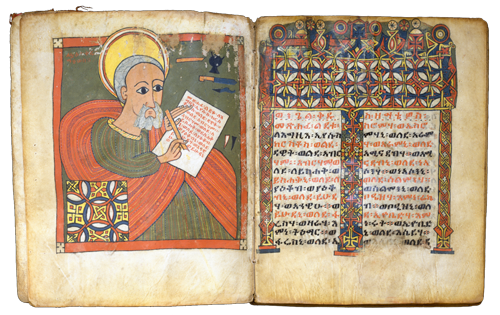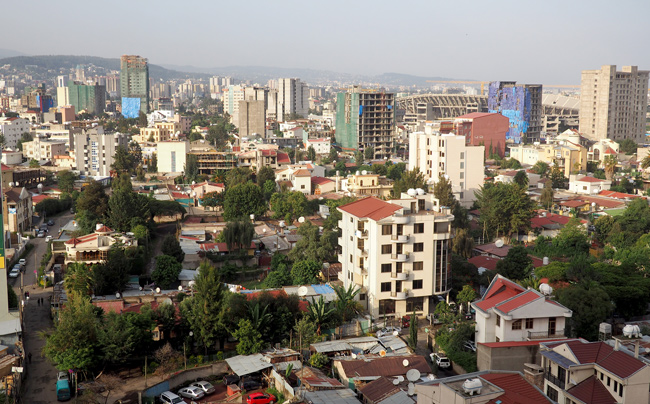Ethiopia in short
Ethiopia is one of the cradles of humanity and looks back on about 3,000 years of history. Known in late antiquity as Askum and later as the Empire of Abyssinia, it is considered the country of origin of coffee. More than 80 peoples live in the world’s most populous landlocked country, with a total of 111 million inhabitants.


Ethiopia was never fully colonized, even during the Italian occupation of 1936-41. The country has been a strong pan-African player and supporter of anti-colonial liberation movements. That is one of the reasons why the capital Addis Ababa – “new flower” – is an important metropolis in Africa today. The African Union has its headquarters here, as well as the United Nations Economic Commission for Africa. Five million people live in Addis Ababa.
The country is home to nine UNESCO World Heritage Sites, among them the rock churches of Lalibela and the city of Harar.
Ethiopia was never fully colonized, even during the Italian occupation of 1936-41. The country has been a strong pan-African player and supporter of many anti-colonial liberation movements. That is one of the reasons why the capital Addis Ababa – “new flower” – is one of the most important metropolises in Africa today. The African Union has its headquarters here, as well as the United Nations Economic Commission for Africa. Five million people live in Addis Ababa.
The country is home to nine fascinating UNESCO World Heritage Sites, among them the rock churches of Lalibela and the city of Harar.

Ethiopia – facts and figures
| Size: | 1,104,300 sq. km, (4.5 x Great Britain) |
|---|---|
| Border countries: | Djibouti, Eritrea, Kenya, Somalia, South Sudan, Sudan |
| Climate: | tropical monsoon with wide topographic-induced variation |
| Geographical terrain: | high plateau, central mountain range divided by Great Rift Valley |
| Main languages: | Oromo 34%, Amharic (official national language) 29%, Somali 6%, Tigrigna 6%, Sidamo 4%, Wolaytta 2%, Gurage 2%, Afar 2%, Hadiyya 2%, other 13%, English (major foreign language taught in schools) |
| Religion (est.): | Ethiopian Orthodox 43%, Muslim (Sunni) 31%, Protestant 23%, Catholic 1%, traditional 1%, other 1% |
| Age structure (est.): | 0-14 years: 40%; 15-24 years: 19%; 25-54 years: 33; 55-64 years: 4%; 65 years +: 3% |
| Life expectancy (est.): | male 66 years; female 70 years |
|---|---|
| Form of government: | Federal Democratic Republic of Ethiopia, federal parliamentary republic, parliament/ Council of People’s Deputies with max. 550 members, elected every 5 years |
| Administrative divisions: | 9 regions, Addis Ababa and Dire Dawa with special status |
| Employment in: | agriculture 68%, industry 10%, service sector 22 |
| Export partners (2019): | China 17%, United States 16%, United Arab Emirates 8%, Saudi Arabia 6%, South Korea 5%, Germany 5% |
| GDP per capita (est.): | $2,221 |
| Literacy of total population: | 52% |
| Unemployment, youth ages 15-24: | 25% |
Source: Worldbank | Gov. of Ethiopia | UN as of Apr. 23 2021
Ethiopia’s Health Extension Program

Ethiopia has established a health care system based on primary health centers, clinics, and hospitals. All major cities have hospitals with specialized physicians. However, most of the hospitals in the country are in the capital Addis Ababa, where a high share of Ethiopia’s medical doctors live and work. In contrast, access to modern health care is limited in many rural areas. This is where around 80 percent of the population lives and make their living with many working in farming.
In 2003, Ethiopia started to build its Health Extension Program (HEP). The government trained tens of thousands of Health Extension Workers (HEW) and assigned them to primary health care units (PHCU). Today more than 42,000 government-salaried female HEWs are deployed in the country, particularly in rural areas. They are assigned to health posts, in villages (“kebele”) with populations ranging from 3,000 to 5,000 inhabitants. Five health posts and a health center work in collaboration and form the PHCU that serves around 25,000 people.
The results have been very positive: A survey undertaken by the University of Queensland, Australia, and the Institute of Tropical Medicine, Belgium, sees “significant improvements in health outcomes during the era of the Millennium Development Goals.” In summary, “there was a 67% reduction in under-five mortality; a 71% decline in maternal mortality ratio; a 90% decline in new HIV infections; a decrease in malaria-related deaths by 73%; and a more than 50% decline” in mortality due to Tuberculosis between 1990 and 2015. The Health Extension Program “has enabled Ethiopia to achieve significant improvements in maternal and child health, communicable diseases, hygiene and sanitation, knowledge and health care seeking.”
Although the health-related problems in Ethiopia are still substantial in comparison to western standards, the country has become a benchmark for many African countries over the last decade. Many delegations from Sub-Saharan countries travel to Ethiopia to get to know more about its health care policy and the Health Extension Program. ![]()
Health in Ethiopia –
facts and figures
| Health expenditure (2018): | 3.3% of the GDP (France 11.3%) |
|---|---|
| Physician density (2018): | 0.08 physicians/1,000 population (Greece 5.5) |
| Hospital bed density (2016): | 0.3 beds/1,000 population (Ukraine 7.5) |
| Underweight children under the age of 5 years (2019): | 21.1% |
| Access to safe drinking water: | 57% of population |
| Access to improved sanitation: | 28% nationwide |
Major infectious diseases –
very high degree of risk in 2020
| Food or waterborne diseases: | bacterial and protozoal diarrhoea, hepatitis A, and typhoid fever |
|---|---|
| Vector borne diseases: | malaria and dengue fever |
| Water contact diseases: | schistosomiasis |
| Animal contact diseases: | rabies |
| Respiratory diseases: | meningococcal meningitis |
Sources: Assefa et al. Globalization and Health (2019) | WHO | UN | USAID | Gov. of Ethiopia
Start Your Journey with Lecturio
Interested to learn how we can support your goals at the individual or institutional level?
Schedule a
tailored demo
Let our experts show you our learning platform.
Get a quote for
your institution
Tell us more about your use case and receive a quote.
Have a question?
Our team has an answer!
Email us any questions you would like us to address.